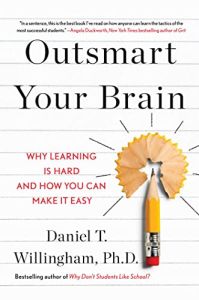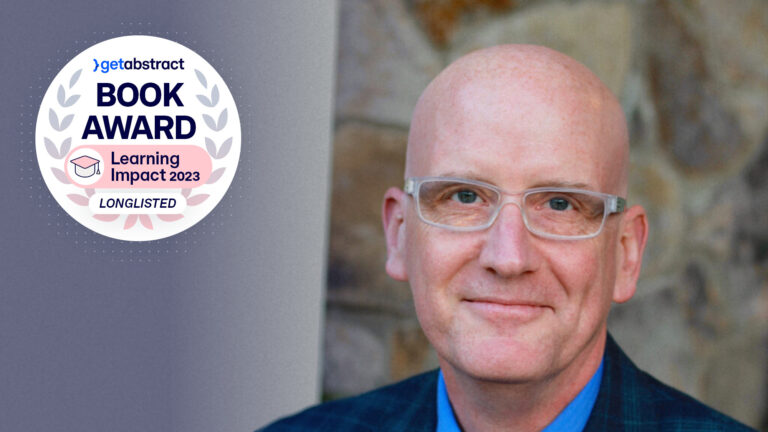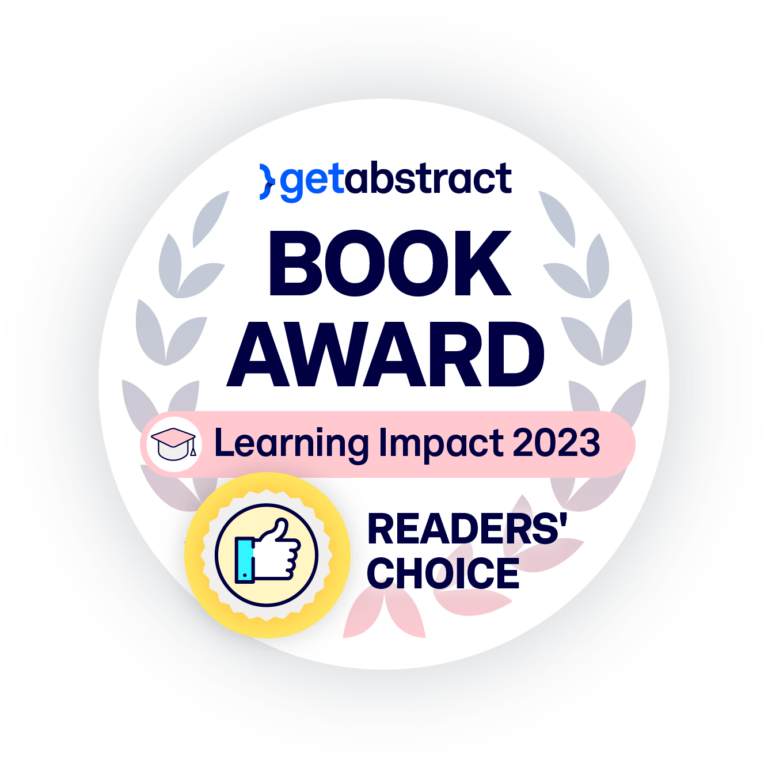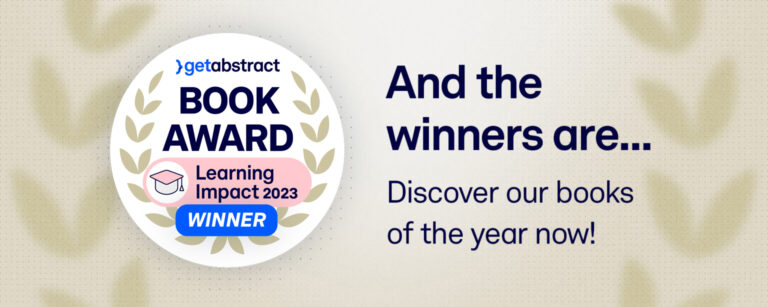Join getAbstract to access the summary!

Join getAbstract to access the summary!
Daniel Willingham
Outsmart Your Brain
Why Learning Is Hard and How You Can Make It Easy
Gallery Books, 2023
What's inside?
Become a better learner, teacher or trainer with this detailed guide from a cognitive psychologist.
Recommendation
Psychology Professor Daniel Willingham offers tips for learners and trainers in his research-backed guide to improving how you acquire and retain knowledge. Willingham’s recommendations, based on insights from cognitive psychology, frequently upend common wisdom about studying, test-prep and teaching. The brain, he says, doesn’t know the best ways to learn; hence, intuitive methods often don’t produce the best results. Instead, Willingham offers counterintuitive – but brain science–based – tools for learning and training, as well as a revised understanding of the important role played by motivation and confidence.
Take-Aways
- Common teaching practices don’t align with how the brain learns. The field of cognitive psychology offers guidance on how to learn better.
- Seek context and structure, practice active listening and make connections during lectures.
- Structure your note-taking, and read for retention – but beware “speed reading.”
- Learn by doing; engage fully with new activities.
- Create useful study guides, flashcards, diagrams and mnemonics.
- Use relaxation techniques and tips to enhance recall when you need to demonstrate what you’ve learned.
- Develop habits that defeat procrastination and incentivize learning.
- Build confidence to boost learning.
Summary
Common teaching practices don’t align with how the brain learns. The field of cognitive psychology offers guidance on how to learn better.
Most people never get explicit training in how to learn. They figure it out for themselves through trial and error or by accepting common wisdom – which is often wrong. Research in brain science instead offers tools and tricks to help you get better results. Often, these hacks go against what people intuitively think should work, so when you apply them, they can feel unproductive or strange. But if you implement them anyway, you’ll gain benefits in understanding and retention. These tools work in any learning context: college courses, lifelong learning, workplace training and elsewhere.
“Independent learning calls for many separate skills, and you needed someone to teach them to you. Most likely, no one did.”
Teachers and trainers can apply lessons from cognitive science to present material in ways that align with brain functioning, and by supporting learners in studying, test preparation and developing self-confidence.
Seek context and structure, practice active listening and make connections during lectures.
The human brain developed to comprehend typical conversational speech, which people speak linearly – a sentence or two at a time. Formal instruction, however, usually has a hierarchical structure. This means that to understand new information, learners need to remember ideas mentioned earlier, and they might have to make connections across an entire lecture or speech in order to catch the underlying meaning. As a consequence, learners can’t just listen passively and expect to retain all the information they hear. They have to be active listeners who pay close attention and work to make connections during and after the lecture.
If you’re a learner, always try to arrive early for formal instruction sessions, as instructors often provide important context and structural clues at the beginning. Take good notes to boost your recall, and create a critical study tool. Aim to understand ideas as the instruction progresses, and write down your understanding in your own words. Emphasize good organization so you can maximize use of your notes later. If the lecturer provides an outline or notes, don’t allow these to substitute for your own.
“Plan for the mismatch between the way the speaker thinks of the content being organized (a hierarchy) and the way you experience a lecture (linearly), so that you make the connections the speaker wants you to.”
Lecturers can help learners gain understanding by going over the lecture’s structure, themes and key learning points at the beginning. Speak at a slow pace. Indicate what learners should record in their notes, and pause to allow time for them to take it down. Provide printed copies of figures and visuals. Throughout the lecture, ask questions that require listeners to apply the information they’re receiving, and encourage learners to ask questions about anything they don’t understand.
Structure your note-taking, and read for retention – but beware “speed reading.”
Lecture notes represent a critical learning resource, yet most learners don’t make full use of them. If you’re a student, review and restructure your notes after each lecture. As you rework your notes, connect the dots. If it helps, sketch diagrams of the material. Look for gaps in your notes and fill them in by referencing the text or other course materials. Form a small study group and compare your notes with other learners. If you need the instructor’s help, prepare in advance by formulating specific questions.
“Speed reading is not a thing. You can waggle your hand from the top to the bottom of the page, but you literally cannot read that fast.”
Apply rigorous strategies to reading your course books, as well. Reading for memory differs from pleasure reading, in which you normally forget what you read on the previous page. Set aside specific time for careful, reflective reading. Don’t simply highlight passages. Use the “SOAR” process: Set goals for your reading, study the book’s organization, decide what questions the book will likely answer, and record your learning.
If you’re a teacher or trainer, show learners how to take structured notes based on their own interpretations of what they’ve heard you say. Support the creation of student study groups. Consider ways you could supplement learners’ notes after lectures.
Learn by doing, and engage fully with new activities.
Often, a teacher or trainer will engage a group in an activity, such as a lab or demonstration, but will fail to tell them what they should notice during the activity. If you’re a learner, try to ascertain what you should pay attention to before you begin the activity. Once it begins, stay engaged, give it your undivided attention and take notes. If the activity will walk you through the steps of doing something, the intent is likely to teach you a new skill. In this case, identify the component skills and steps. Just having an experience of something won’t develop a new skill; you’ll likely need deliberate practice.
“Wanting to learn has no direct impact on learning.”
Teachers and trainers can help learners by explaining the purpose of activities in advance and telling them where they should be directing their attention. When you assign projects, realize many learners might have no previous experience selecting, planning and undertaking a project. You might need to teach them how to plan and execute a project. Learners also might lack experience participating in groups. Don’t expect this type of instruction to require less effort on your part than other modes of teaching.
Create useful study guides, flashcards, diagrams and mnemonics.
Rereading alone won’t ensure you understand and remember what you need to know. Instead, create a study guide for each important exam. Learn as much as you can about how the test will be structured. Use previous years’ exams where possible to get a feel for the structure and question types, but avoid practicing with them as a study method. Doing so would prepare you mainly for specific questions that likely won’t appear on this year’s test.
Working with your study group, create your own study guide, flashcards and other materials. The act of creating these tools will help solidify your memory for the exam. Make the questions in your study guide meaningful – “how” or “why” questions. Memorize the answers by practicing them aloud. Draw diagrams, and use mnemonics – catchy acronyms like SOAR – to help you remember.
Practice alone and with your study group. Cramming the night before might aid your memory during the test, but you’ll forget everything almost immediately after it. Start your exam preparation well in advance, study consistently and use a schedule and to-do lists to guide you.
“Use techniques that yield long-lasting memory – organizing, thinking about meaning, and retrieval practice – even though they feel difficult and seem less productive in the short run.”
Gauge your readiness for the exam by taking a similar test and measuring your success. When you can explain the concepts you’re learning, you’re ready. If you merely understand what someone else says about the material, you’re not. Don’t let the familiarity that comes from rereading books or notes lull you into overconfidence.
Teachers and trainers should support learners by helping them prepare for tests and exams. Specify the content in advance. Administer low-stakes or no-stakes quizzes, outline what a study guide should include, and set aside a brief period at the end of some classes for students to practice creating study guide questions for the material covered that day. Provide examples of test questions, and facilitate students sharing the study questions and answers they generate. After tests and exams, offer to meet with students individually to discuss their performance.
Use relaxation techniques and tips to enhance recall when it comes time to demonstrate what you’ve learned.
Get enough sleep the night before any kind of exam, as sleep solidifies your memory. As you start, imagine being in the place where you studied, as this can help with recall. If you feel anxious, reframe the feeling to one of excitement – this will keep you alert and focused. Manage your stress consciously: Breathe deeply and visualize success.
Take the first minute to read the instructions and calculate the amount of time you should spend on each question. Read each question slowly and carefully to make sure you understand it. If you can’t remember an answer immediately, don’t give up. Reread the question, and if this doesn’t spark your recall, move on and come back to the question later.
For essay questions or written questionnaires, use scratch paper to list the key elements you’ll include and write a brief outline. Think through how your essay will conclude before you start writing. Reserve time at the end of the exam to go back and reread your answers and essays.
“Don’t assume that your first instinct or your second guess is more likely to be correct; trust your confidence in which answer is the right one.”
When you get your results back, take some time to review what you got right and wrong and why. Seek your instructor’s feedback, and focus on learning what the results demonstrate about what you have and haven’t yet mastered.
Develop habits that defeat procrastination and incentivize learning.
Defeat procrastination by creating habits or routines for things you might otherwise avoid. Break large, daunting tasks into small components or steps you can knock off in 20 to 60 minutes. Just get started. Once you start a task you would rather put off, you’ll probably find it’s not as bad as you thought. Tell yourself you’ll take a break whenever you want. The following tactics might help:
- Find quiet spaces and the best times – for you – to work.
- Turn off distractions, such as your phone and social media. Listen to music if it puts you in a better mind-set, and only if it doesn’t distract you.
- Don’t multitask. No two cognitive tasks can be done well simultaneously.
- Stay focused, whether you’re listening to a lecture, reading or studying. But if you hit a roadblock with a specific task, put it aside for a while and come back to it later.
- Take sufficient breaks – a rest after each task or item on your to-do list, for example. Schedule respites, and resist skipping them.
- If there’s something you’d rather be doing than learning, promise yourself that reward once you reach your work goal.
- Hang out with other committed learners, and enlist the help of reliable friends to keep you on track.
If you tend to get distracted from learning, try to imagine the task as more appealing, and imagine potential distractions as less appealing. Work to control your impulses. Think about your decisions in terms of the costs of not learning. Ask yourself how you’ll feel tomorrow about going out tonight instead of studying.
Teachers and trainers should give learners examples of how to overcome procrastination – from their own experience, if possible. Clearly define all assignments, and provide guidance on what to do if learners encounter difficulties getting started. Assist them in creating a plan to prioritize tasks and break down large projects into manageable pieces. For significant projects, implement intermediate deadlines.
Build confidence to boost learning.
Self-confidence helps learners take setbacks in stride, knowing they have the ability to learn and only need to put in more effort, for example. People naturally develop self-confidence as learners when they’ve succeeded in the past, when they’ve performed well in comparison to other people around them, and when their friends and family view learning as important and worthwhile. People who didn’t have these experiences often lack self-confidence as learners, even when they possess academic ability.
If you’re a learner, you can build your self-confidence by considering all the things you’ve learned outside of school – in sports, video games, and so forth. This demonstrates you already have the skills to learn; you just need to apply them in a different setting. Spend time with people who love to learn. Don’t drop old friends, just add new ones. But avoid comparing yourself to others – measure yourself against your own progress.
“Learning is effective because of what you do, not who you are.”
Remind yourself that, contrary to the messages you might have received in school, being an outstanding learner isn’t a be-all and end-all. You only need to be a good enough learner to absorb the information you need to learn or to develop the skills you’re aiming for. Learning itself is only a means to that end. Strive to find meaning and interest in what you seek to learn. This will motivate you to study it more closely and help you remember it. As a consequence, you’ll do well on tests and build your confidence, which will improve your learning habits, creating a virtuous cycle.
Teachers and trainers can build learners’ confidence by encouraging them to recognize their own accomplishments. Assist them in identifying where they excel and where they encounter challenges, and provide guidance in overcoming difficulties. Establish personal connections with learners; this creates a comfortable environment to foster learners’ confidence.
About the Author
Daniel T. Willingham teaches psychology at the University of Virginia. His research focuses on applying findings from cognitive psychology and neuroscience to K–12 education. His books include Why Don’t Students Like School? and When Can You Trust the Experts? Willingham also writes the “Ask the Cognitive Scientist” column for American Educator magazine.
This document is restricted to personal use only.























Comment on this summary
Interesting to see if when buying the books, I get the answers I am looking for.